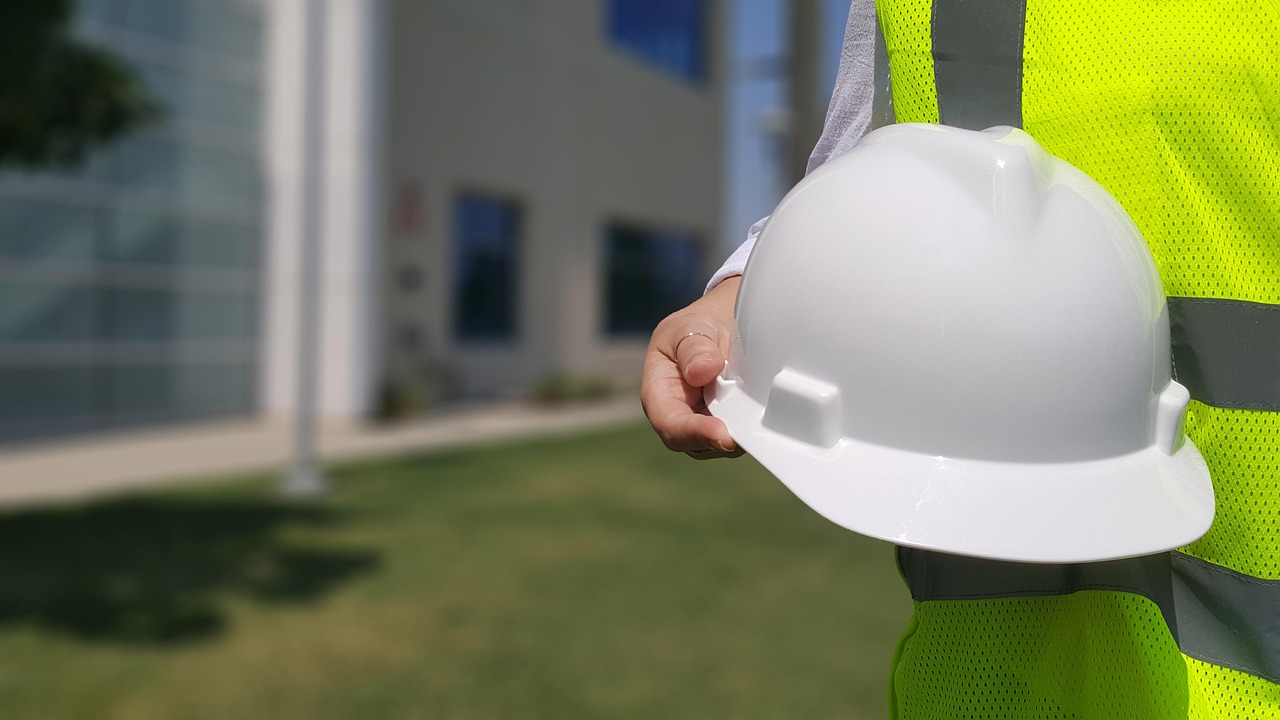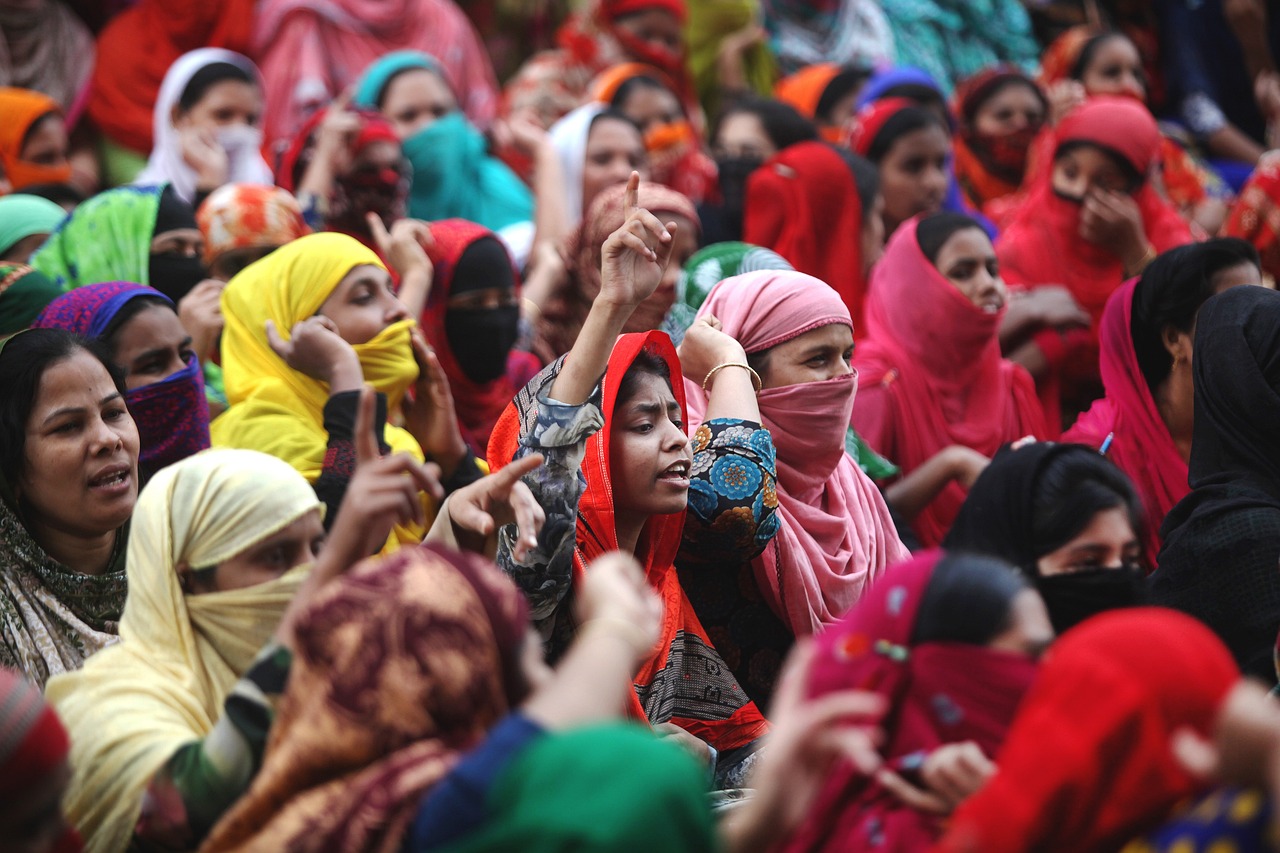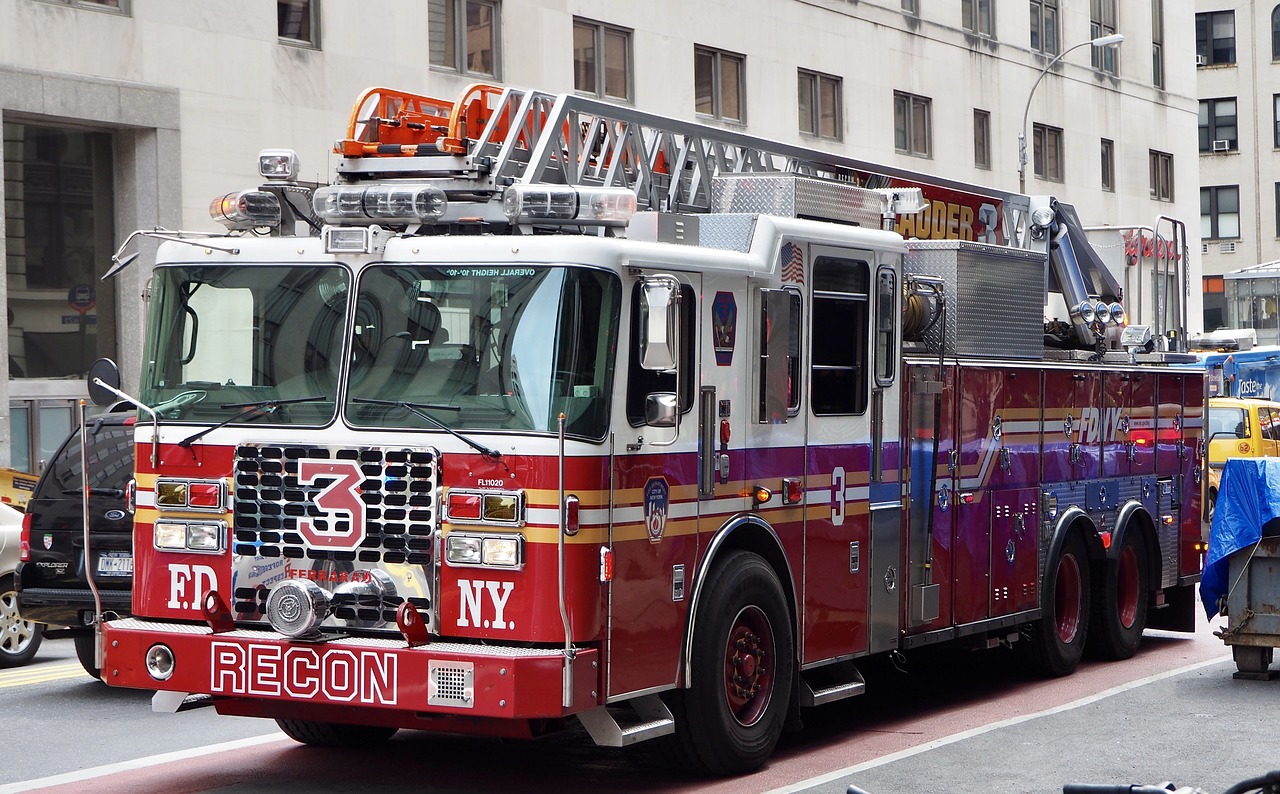Managing Crowd Safety During Emergencies
In today's fast-paced world, the safety of large gatherings has become a paramount concern. Whether at concerts, sporting events, or festivals, the potential for emergencies is ever-present. It's not just about having a plan; it's about executing it effectively when the moment arises. This article dives into the effective strategies, protocols, and technologies that can be employed to ensure crowd safety during emergencies. We’ll explore the critical importance of preparedness, communication, and response, all aimed at protecting lives and minimizing chaos.
Crowds are not just a collection of individuals; they are a complex organism that reacts in unpredictable ways during emergencies. Understanding how crowds behave is essential for effective management. When panic strikes, psychological factors like fear and confusion can lead to chaotic movements. Imagine a flock of birds suddenly taking flight—this is similar to how a crowd can react when faced with danger. Physical factors, such as the density of the crowd and the layout of the venue, also play significant roles in determining how people will move. Recognizing these dynamics can help in formulating strategies that guide crowds safely to exits and prevent unnecessary injuries.
Emergency preparedness planning is the backbone of crowd safety. It involves a comprehensive approach that includes risk assessment, resource allocation, and training programs for personnel. Think of it as building a safety net that catches everyone when the unexpected happens. By identifying potential risks and allocating resources effectively, event organizers can create a robust framework to handle emergencies. Training programs equip staff with the necessary skills to manage crowd-related incidents, ensuring they are ready to act decisively when needed. This proactive approach not only saves lives but also instills confidence among attendees.
Establishing clear and accessible evacuation routes is crucial during emergencies. These routes should be designed to facilitate orderly movement, minimizing panic and confusion among crowd members. Imagine being in a crowded theater where the lights suddenly go out. Without clear directions, people might rush towards exits haphazardly, leading to injuries. To prevent such scenarios, evacuation routes must be prominently marked and communicated before the event starts. Regular assessments and updates of these routes can further enhance safety.
Effective signage and communication strategies are vital for guiding crowds during emergencies. Signs should be easily visible and understandable, directing individuals towards safe exits and providing critical information. Additionally, utilizing technology such as mobile apps can enhance communication. For instance, sending real-time alerts to attendees can keep them informed about the situation and guide them to safety. The goal is to ensure that everyone receives timely information and direction, thereby enhancing overall safety.
Regular drills and training sessions for staff and volunteers can significantly improve response times and crowd management during real emergencies. Think of it as a rehearsal for a play; the more you practice, the more seamless the performance becomes. These drills foster a culture of preparedness, allowing everyone involved to know their roles and responsibilities. When the alarm sounds, there’s no time for confusion. Well-trained personnel can lead attendees to safety efficiently, reducing chaos and potential injuries.
In our tech-driven age, leveraging technology for crowd safety has become essential. Surveillance systems and crowd monitoring software can provide real-time data on crowd density and behavior. This information is invaluable for making informed decisions during emergencies. Additionally, mobile applications can facilitate communication among event organizers, staff, and attendees, ensuring everyone is on the same page. By incorporating these tools, we can enhance situational awareness and response capabilities, ultimately saving lives.
Establishing strong partnerships with local emergency services is crucial for a cohesive response during emergencies. This coordination allows for efficient resource deployment and communication. Imagine a well-oiled machine where every part works in harmony; that’s the goal when event organizers and emergency services collaborate. Regular meetings and joint training exercises can strengthen these relationships, ensuring that everyone knows their roles and can act swiftly when needed.
Creating effective communication protocols between event organizers and emergency services is essential for rapid information sharing. During a crisis, every second counts, and having a clear line of communication can make all the difference. Establishing predefined channels for sharing information ensures that everyone is informed and can act swiftly. This coordination can significantly enhance the overall response to emergencies, ultimately protecting lives.
The necessity of conducting post-emergency evaluations cannot be overstated. After an incident, it’s crucial to assess the effectiveness of crowd management strategies, identify areas for improvement, and enhance future preparedness efforts. This evaluation process is akin to a debriefing after a game; it allows teams to learn from their experiences and refine their strategies moving forward. By analyzing what worked and what didn’t, we can develop better plans to safeguard crowds in future events.
- What should I do during a crowd emergency? Stay calm, follow the directions of staff, and move towards the nearest exit.
- How can I prepare for a large event? Familiarize yourself with the venue layout, identify emergency exits, and stay aware of announcements.
- What role does technology play in crowd safety? Technology enhances communication and situational awareness, allowing for quicker responses to emergencies.

Understanding Crowd Dynamics
When we talk about crowd dynamics, we're diving into the fascinating world of how people behave in groups, especially during emergencies. Picture this: a concert suddenly turns chaotic when a fire alarm goes off. What happens next? People start moving, but not always in a rational way. Understanding the psychological and physical factors that influence crowd behavior is crucial for effective crowd management. It's like trying to herd cats—each individual reacts differently based on their perceptions, emotions, and the immediate environment. In emergencies, fear can drive people to make split-second decisions that may not be the safest or most logical.
The way a crowd reacts can be influenced by various factors, including the size of the crowd, the environment, and the nature of the emergency. For instance, in a confined space, the risk of panic increases significantly. Studies show that larger crowds tend to create a sense of anonymity, which can lead to a decrease in personal responsibility. This phenomenon is known as the “bystander effect.” When individuals feel less accountable, they may hesitate to act or assist others, further complicating the situation.
Moreover, the physical layout of a space plays a critical role in how crowds move. Think about a narrow exit during a fire drill; if the path is blocked or unclear, chaos can ensue. To illustrate this, consider the following table that outlines key factors affecting crowd dynamics:
| Factor | Impact on Crowd Behavior |
|---|---|
| Size of Crowd | Larger crowds may lead to increased panic and confusion. |
| Environment | Confined spaces can exacerbate feelings of claustrophobia and fear. |
| Nature of Emergency | Different emergencies evoke different emotional responses (e.g., fire vs. medical emergency). |
| Communication | Clear communication can guide behavior and reduce panic. |
Understanding these dynamics is not just an academic exercise; it's a vital tool for anyone involved in planning events or managing crowds. By recognizing how people are likely to react in stressful situations, we can develop strategies to mitigate chaos and enhance safety. For example, having trained personnel who understand these dynamics can make a world of difference when seconds count. They can help steer the crowd towards safe exits and provide reassurance, reducing the overall panic.
In summary, grasping the intricacies of crowd dynamics is essential for effective emergency management. It's about anticipating reactions and preparing accordingly, much like a chess player anticipating their opponent's moves. By understanding the psychological triggers and physical behaviors that come into play during emergencies, we can create safer environments—where people feel secure and are guided effectively in times of crisis.

Emergency Preparedness Planning
When it comes to ensuring crowd safety during emergencies, effective emergency preparedness planning is not just a luxury; it's a necessity. Imagine a bustling concert, packed with thousands of excited fans. Now, picture a sudden emergency—what happens next can make all the difference between chaos and a well-coordinated response. The first step in this journey is conducting a comprehensive risk assessment. This involves identifying potential hazards that could affect the crowd, whether it’s a fire, natural disaster, or even a medical emergency. By understanding these risks, event organizers can develop strategies tailored to specific scenarios, ensuring that they are ready for anything.
Next, resource allocation plays a crucial role in emergency preparedness. It's about ensuring that the right tools, personnel, and equipment are in place before an incident occurs. For instance, having enough trained staff on hand can significantly improve response times. Additionally, consider the importance of training programs. These programs should not only equip staff with the necessary skills to handle emergencies but also instill a sense of confidence and calmness. After all, a well-prepared team can be the difference between a smooth evacuation and a scene of panic.
One of the key aspects of emergency preparedness planning is developing evacuation routes. These routes must be clear, well-marked, and accessible to everyone, including those with disabilities. Imagine a scenario where panic sets in; if people know exactly where to go, they can exit the venue swiftly and safely. To facilitate this, it's essential to conduct a thorough analysis of the venue layout and identify the most efficient pathways for evacuation.
Moreover, effective signage and communication strategies are vital for guiding crowds during emergencies. Think of informative signs as the guiding stars in a chaotic sky. They provide clear directions, helping individuals make informed decisions quickly. In addition to physical signage, utilizing technology such as mobile applications can enhance communication. Sending alerts and updates directly to attendees’ phones can keep everyone informed and calm during a crisis.
Lastly, regular drills and training sessions for staff and volunteers cannot be overstated. These practices not only familiarize everyone with emergency protocols but also create a culture of preparedness. When staff members are confident in their roles, they can lead the crowd to safety more effectively, turning a potentially disastrous situation into a manageable one.
In conclusion, emergency preparedness planning is a multifaceted approach that encompasses risk assessment, resource allocation, and training. By investing time and effort into these areas, event organizers can create a safer environment for everyone involved. Remember, it's not just about having a plan; it's about having a well-thought-out plan that can adapt to the unpredictable nature of emergencies.
- What is the first step in emergency preparedness planning?
The first step is conducting a comprehensive risk assessment to identify potential hazards. - Why is staff training important?
Training equips staff with the necessary skills to handle emergencies and instills confidence in their ability to manage situations effectively. - How can technology improve crowd safety?
Technology can enhance communication through mobile applications and provide real-time updates to attendees during emergencies. - What role do evacuation routes play?
Clear and accessible evacuation routes minimize panic and confusion, facilitating an orderly exit during emergencies.

Developing Evacuation Routes
When it comes to managing crowd safety during emergencies, the development of effective evacuation routes is nothing short of crucial. Imagine a scenario where panic sets in—people are rushing in every direction, and chaos reigns. This is where having a well-thought-out evacuation plan can make all the difference. By establishing clear and accessible evacuation routes, we can facilitate an orderly movement during emergencies, significantly reducing the risk of injury and confusion among crowd members.
One of the first steps in developing these routes is to conduct a thorough risk assessment. This involves analyzing the venue layout, identifying potential hazards, and understanding the crowd dynamics that could influence how people move during a crisis. It’s essential to consider factors such as the size of the crowd, the physical capabilities of attendees, and any potential bottlenecks that could impede movement. A well-designed evacuation route should take all these elements into account, ensuring that it accommodates the needs of everyone present.
Once the assessment is complete, the next step is to create a detailed evacuation plan. This plan should outline multiple routes to safety, ensuring that there are alternatives in case one route becomes blocked or unsafe. The routes should be clearly marked and free of obstacles to allow for swift evacuation. Furthermore, it’s vital to ensure that these routes are accessible to individuals with disabilities, as inclusivity is key in any emergency response plan.
To enhance the effectiveness of the evacuation routes, we must also invest in signage and communication strategies. Clear, visible signs should guide individuals towards the nearest exits, with arrows indicating the direction to follow. In addition to physical signage, utilizing technology such as mobile apps can provide real-time updates and directions to attendees during an emergency. Imagine receiving a notification on your phone that directs you to the safest exit—this could be a game-changer in a high-stress situation.
Moreover, regular training and drills are essential to ensure that both staff and attendees are familiar with the evacuation routes. During these drills, participants can practice their movements, allowing them to understand the best ways to exit the venue quickly and safely. This practice can also help identify any potential issues with the routes, enabling organizers to make necessary adjustments before an actual emergency occurs.
In conclusion, developing effective evacuation routes is a multifaceted process that requires careful planning, ongoing training, and clear communication. By prioritizing these elements, we can significantly enhance crowd safety during emergencies, ensuring that everyone can exit a venue swiftly and safely, minimizing chaos and protecting lives.
- What should be included in an evacuation route plan? An evacuation route plan should include multiple exit routes, clear signage, accessibility considerations, and communication strategies for informing attendees.
- How often should evacuation drills be conducted? Evacuation drills should be conducted at least twice a year to ensure that everyone is familiar with the procedures and routes.
- What role does technology play in evacuation planning? Technology can enhance evacuation planning by providing real-time updates, facilitating communication, and using crowd monitoring to manage flow during an emergency.

Signage and Communication
In any emergency situation, effective signage and communication strategies are paramount for maintaining order and guiding individuals to safety. Imagine being in a crowded venue where panic begins to ripple through the crowd like a wave; clear signs can act as lifebuoys, steering people towards safety rather than chaos. Well-designed signage not only conveys essential information but also serves as a psychological anchor for individuals who may feel lost or overwhelmed. For instance, directional signs should be strategically placed at key points to ensure that everyone knows where to go, while information boards can provide real-time updates about the situation.
Moreover, communication is the lifeline during emergencies. It’s crucial to have a reliable system in place to disseminate information quickly and effectively. This can take various forms, including public address systems, mobile alerts, and even social media updates. Each of these channels plays a unique role in reaching different segments of the crowd. For example, while a loudspeaker might capture the attention of those nearby, a text alert can reach individuals who are further away, ensuring that no one is left uninformed.
To enhance the effectiveness of signage and communication, consider the following key elements:
- Clarity: Use simple, straightforward language and universally recognized symbols to ensure that everyone can understand the message.
- Visibility: Signs should be large, brightly colored, and well-lit to be easily seen, even in low-light conditions.
- Accessibility: Ensure that information is available in multiple languages and formats, including braille for visually impaired individuals.
Furthermore, practice makes perfect. Regular training sessions for staff on how to communicate effectively during emergencies can significantly enhance the overall response. These drills can help familiarize everyone with the communication tools available and ensure that they know how to use them under pressure. For instance, conducting mock emergencies can reveal potential gaps in communication strategies and signage placement, allowing for adjustments before a real crisis occurs.
In conclusion, the combination of clear signage and effective communication not only enhances crowd safety but also empowers individuals to make informed decisions during emergencies. By ensuring that people have the information they need when they need it, we can transform a potentially chaotic situation into a more manageable one, ultimately saving lives and reducing panic.
Q: What types of signage are most effective during emergencies?
A: Effective signage includes directional signs, information boards, and emergency exit signs that are clear, visible, and easy to understand.
Q: How can technology improve communication during emergencies?
A: Technology can enhance communication through public address systems, mobile alerts, and social media updates, ensuring timely information reaches all individuals.
Q: Why is training important for staff during emergencies?
A: Regular training helps staff become familiar with communication tools and strategies, improving response times and effectiveness during real emergencies.

Drills and Training
When it comes to managing crowd safety during emergencies, the importance of cannot be overstated. Imagine a scenario where an unexpected incident occurs—panic spreads like wildfire, and chaos ensues. In such moments, the effectiveness of your response hinges on how well-prepared your team is. Regular drills simulate real-life emergencies, allowing staff and volunteers to practice their roles, familiarize themselves with evacuation routes, and develop a sense of confidence in their ability to manage a crowd effectively.
Training sessions should not only focus on the logistics of crowd management but also on the psychological aspects of emergencies. Understanding how individuals react under stress is crucial. For instance, during a drill, participants might experience heightened anxiety, which can lead to irrational decision-making. By incorporating realistic scenarios into training, you can help your team learn to recognize these behaviors and respond appropriately. This dual approach—practical skills combined with psychological understanding—ensures a well-rounded preparation.
Moreover, drills should be designed to cater to various emergency situations. For example, consider conducting drills for:
- Fire evacuations
- Medical emergencies
- Natural disasters
- Active shooter scenarios
Each type of drill serves a different purpose and equips your team with the specific skills needed to handle various challenges. Additionally, it's essential to invite local emergency services to participate in these drills. Their involvement not only enhances the realism of the exercises but also fosters a collaborative environment, allowing both your team and emergency responders to develop a synchronized response plan.
After each drill, conducting a thorough debrief is vital. This is the time to discuss what went well, what didn’t, and how improvements can be made. Feedback from participants can provide valuable insights into the effectiveness of the training and highlight areas that may require further focus. Consider using a simple evaluation form to gather feedback. Here’s a basic template:
| Aspect Evaluated | Rating (1-5) | Comments |
|---|---|---|
| Clarity of Instructions | ||
| Realism of the Drill | ||
| Team Coordination | ||
| Overall Preparedness |
In conclusion, investing time and resources into is not just a good practice; it's a necessity for effective crowd management. By preparing your team through realistic simulations and thorough evaluations, you’re not only enhancing their skills but also fostering a culture of safety and preparedness that can save lives in critical moments. Remember, when the unexpected happens, it’s not just about having a plan; it’s about having a team that knows how to execute that plan under pressure.
Q1: How often should drills be conducted?
A1: It's recommended to conduct drills at least twice a year, but more frequent sessions may be necessary based on the scale of events and specific risks involved.
Q2: Can we involve attendees in the drills?
A2: Yes! Engaging attendees in drills can enhance their awareness and preparedness, making them more likely to follow instructions during an actual emergency.
Q3: What if we have different types of emergencies?
A3: Tailor your drills to cover a variety of scenarios, ensuring that your team is well-prepared for different types of emergencies.

Utilizing Technology
This article discusses effective strategies, protocols, and technologies for ensuring crowd safety during emergencies, highlighting the importance of preparedness, communication, and response to protect lives and minimize chaos.
An overview of how crowds behave in emergencies, including the psychological and physical factors that influence their movement and decision-making, which is crucial for effective crowd management.
Exploring the essential elements of emergency preparedness planning, including risk assessment, resource allocation, and training programs designed to equip personnel for potential crowd-related incidents.
The significance of establishing clear and accessible evacuation routes to facilitate orderly movement during emergencies, minimizing panic and confusion among crowd members.
Effective signage and communication strategies are vital for guiding crowds during emergencies, ensuring that individuals receive timely information and direction to enhance safety.
Regular drills and training sessions for staff and volunteers can significantly improve response times and crowd management during real emergencies, fostering a culture of preparedness.
In today's fast-paced world, technology plays a pivotal role in enhancing crowd safety during emergencies. Imagine a scenario where a large crowd is gathered for an event, and suddenly, an unforeseen situation arises. How can we ensure their safety? This is where technology steps in, acting as a lifeline. From surveillance systems that monitor crowd behavior to crowd monitoring software that analyzes movement patterns, technology provides invaluable insights that can save lives.
One of the most effective tools in crowd management is the use of mobile applications. These apps can deliver real-time alerts and updates to attendees, ensuring they are informed about emergency procedures or evacuation routes. For instance, if an emergency occurs, an app can instantly notify users of the safest exits, thereby reducing confusion and panic. This immediate access to information can be the difference between chaos and controlled evacuation.
Moreover, drone technology has emerged as a game-changer in crowd safety. Drones equipped with high-definition cameras can provide aerial views of large gatherings, allowing emergency services to assess the situation from above. This bird's-eye view helps in identifying bottlenecks or areas where crowd density is dangerously high, enabling a more strategic response. Just picture a drone hovering above a festival, sending live feeds to a command center that analyzes the crowd's flow and directs emergency responders accordingly. It’s like having a superhero watching over the crowd!
Additionally, social media platforms can also play a crucial role in crowd safety. During emergencies, people often turn to social media to seek information or share their experiences. By monitoring these platforms, emergency services can gauge the crowd's sentiment and respond to emerging issues more effectively. For instance, if multiple users tweet about a specific problem, authorities can quickly address it, preventing further escalation.
However, while technology offers extraordinary benefits, it is essential to integrate it with human oversight. Technology should complement human decision-making, not replace it. A well-trained team equipped with the latest tools can make informed decisions that prioritize safety. Therefore, investing in both technology and personnel training is crucial for effective crowd management.
The importance of establishing strong partnerships with local emergency services to ensure a cohesive response during emergencies, allowing for efficient resource deployment and communication.
Creating effective communication protocols between event organizers and emergency services is essential for rapid information sharing and coordinated response efforts during a crisis.
The necessity of conducting post-emergency evaluations to assess the effectiveness of crowd management strategies, identify areas for improvement, and enhance future preparedness efforts.
- What are the key technologies used in crowd safety management? Technologies such as surveillance systems, crowd monitoring software, mobile applications, and drones are commonly utilized to enhance crowd safety.
- How can mobile apps improve crowd safety during emergencies? Mobile apps can provide real-time alerts and information about evacuation routes, significantly reducing confusion and panic among attendees.
- Why is training important in crowd management? Regular training ensures that personnel are prepared to respond effectively during emergencies, improving overall response times and crowd safety.
- How do social media platforms contribute to crowd safety? Monitoring social media allows emergency services to gauge public sentiment and respond to issues as they arise, facilitating better communication and management.

Coordination with Emergency Services
When it comes to managing crowd safety during emergencies, is not just important; it's absolutely essential. Imagine a concert where thousands of people are gathered, and suddenly, a fire breaks out. If the event organizers and emergency responders aren't on the same page, the situation can escalate from bad to catastrophic in the blink of an eye. Effective coordination ensures that everyone knows their role, the right resources are deployed, and communication flows seamlessly.
Establishing strong partnerships with local emergency services can significantly enhance the overall safety of any public gathering. This involves not just a casual relationship, but a well-planned collaboration that includes regular meetings, joint training exercises, and clear communication protocols. When both parties understand each other's strengths and limitations, they can create a robust response plan that can be activated at a moment's notice.
One of the key aspects of this coordination is developing communication protocols. These protocols should outline how information will be shared during an emergency, ensuring that everyone is informed and can act quickly. For instance, using a combination of radio communication and mobile apps can help in disseminating information rapidly. Imagine a scenario where an emergency service team needs to relay critical information about a developing situation—having a reliable communication line can save lives.
Moreover, it’s crucial to conduct joint drills that simulate various emergency scenarios. These drills not only familiarize both the event staff and emergency responders with the venue and crowd dynamics but also help in identifying potential gaps in the response strategy. Regular practice can mean the difference between chaos and a well-orchestrated evacuation. For example, if a drill reveals that certain evacuation routes are blocked or unclear, adjustments can be made well before an actual emergency occurs.
In addition to drills, maintaining an updated contact list of local emergency services is vital. This list should include not just phone numbers but also the specific roles of each contact. For example, knowing who to call for medical emergencies, fire department support, or police assistance can streamline the response process. A simple table can help visualize this information:
| Emergency Service | Contact Person | Phone Number | Specialization |
|---|---|---|---|
| Local Fire Department | Chief John Doe | (555) 123-4567 | Fire Safety |
| Emergency Medical Services | Dr. Jane Smith | (555) 987-6543 | Medical Emergencies |
| Local Police | Officer Mike Johnson | (555) 654-3210 | Crowd Control |
Ultimately, the goal of coordinating with emergency services is to create a unified front that prioritizes safety and efficiency. When emergencies strike, every second counts, and having a well-rehearsed plan in place can significantly mitigate risks. By fostering these relationships and continuously improving communication and response strategies, event organizers can ensure that they are prepared for whatever challenges may arise, keeping both the crowd and responders safe.
- Why is coordination with emergency services crucial during events? Coordination ensures a unified response, facilitating quick action and minimizing chaos.
- What are effective communication protocols? Effective protocols include clear lines of communication, using both radios and mobile apps for rapid information sharing.
- How often should joint drills be conducted? Regular drills should be held at least twice a year to ensure all parties are familiar with the venue and emergency procedures.
- What should be included in an emergency contact list? The list should include emergency service names, contact persons, phone numbers, and their specific roles.

Developing Communication Protocols
When it comes to managing crowd safety during emergencies, communication protocols are the backbone of an effective response strategy. Imagine being in a crowded venue during a sudden crisis—chaos can ensue if people don’t know where to go or what to do. This is where well-defined communication protocols come into play. They ensure that everyone, from event organizers to emergency services, is on the same page and can act swiftly and efficiently.
To develop these protocols, it's essential to start with a clear understanding of the information flow that needs to occur during a crisis. Who needs to communicate with whom? What information is critical? Establishing a clear hierarchy of communication can help streamline the process. For example, event coordinators should have direct lines of communication with local emergency services, allowing for rapid information sharing and coordinated responses. This is not just about having a plan; it’s about ensuring that everyone knows their role and the channels through which they should communicate.
Another critical aspect is the use of technology to facilitate communication. In today’s digital age, relying solely on traditional methods like walkie-talkies may not be sufficient. Consider implementing a centralized communication platform that allows for real-time updates and alerts. This could be a mobile app or a dedicated software system that all personnel can access. Such systems can help disseminate information quickly, whether it’s an evacuation order or updates on the situation.
Furthermore, regular training sessions are crucial for ensuring that all team members are familiar with the communication protocols. These drills should simulate various emergency scenarios, allowing staff to practice their responses and refine the communication process. This not only builds confidence among team members but also highlights any potential gaps in the communication plan that need to be addressed. Imagine how much smoother an evacuation would be if everyone was trained to follow the same protocol, reducing confusion and panic.
In addition to internal communication, it’s vital to consider how information will be communicated to the crowd itself. Clear signage, public address systems, and even social media updates can play a significant role in guiding individuals during an emergency. The goal is to provide timely and accurate information that helps minimize chaos and keeps people safe. For instance, if a fire breaks out, clear instructions on where to exit and what to do can save lives.
In summary, developing robust communication protocols is not just a checkbox in emergency planning; it’s a comprehensive approach to ensuring crowd safety. By establishing clear lines of communication, leveraging technology, training personnel, and effectively communicating with the crowd, organizations can significantly enhance their response capabilities during emergencies. After all, in the face of chaos, clarity is key.
- What are the key elements of effective communication protocols? Effective communication protocols should include clear information flow, designated communication channels, and real-time updates.
- How can technology improve communication during emergencies? Technology can facilitate faster information sharing, enhance situational awareness, and provide real-time updates through centralized platforms.
- Why is training important for communication protocols? Regular training ensures that all personnel are familiar with the protocols, reducing confusion and improving response times during actual emergencies.
- How should information be communicated to the crowd? Information should be conveyed through clear signage, public announcements, and social media updates to guide individuals effectively during a crisis.

Post-Emergency Evaluation
After any emergency situation, the dust settles and the chaos subsides, leaving behind a crucial opportunity for reflection and improvement. is not just a bureaucratic step; it’s a vital process that can shape future responses and enhance overall crowd safety. Think of it as a debriefing session where lessons are learned, and strategies are refined. This phase is essential for identifying what worked well and what didn’t during the crisis.
One of the first steps in this evaluation process is to gather data. This can include everything from eyewitness accounts to video footage from surveillance cameras. The more information collected, the clearer the picture of the event will become. Analyzing this data helps in understanding crowd behavior, identifying bottlenecks in evacuation routes, and assessing the effectiveness of communication strategies. For instance, if a particular exit was underutilized, it might indicate a need for better signage or clearer instructions.
Moreover, it’s important to engage with all stakeholders involved, including emergency services, event organizers, and even attendees. Conducting interviews or surveys can provide valuable insights into different perspectives. Questions might include:
- How did you feel about the communication during the emergency?
- Were there any obstacles that hindered your ability to evacuate?
- What improvements would you suggest for future events?
This feedback is gold. It not only highlights areas needing improvement but also reinforces the importance of community involvement in safety planning. Once the data is collected and analyzed, the next step is to create a comprehensive report. This report should detail the findings, highlight successes, and outline specific recommendations for future events. It’s like a roadmap for improvement, guiding future preparations and ensuring that lessons learned are not forgotten.
Additionally, it’s beneficial to conduct a follow-up meeting with all stakeholders to discuss the findings from the evaluation report. This meeting can serve as a platform to brainstorm new ideas and innovative solutions to enhance crowd safety. Emphasizing a culture of continuous improvement fosters a proactive approach to safety rather than a reactive one.
In summary, the post-emergency evaluation process is not merely a formality; it’s an essential step in the ongoing effort to improve crowd safety. By systematically analyzing events, collecting feedback, and implementing changes, we can better prepare for future emergencies. Remember, every emergency is a learning opportunity, and it’s up to us to seize that opportunity to protect lives and minimize chaos in the future.
- What is the main goal of a post-emergency evaluation?
The primary goal is to assess the effectiveness of the response to the emergency, identify areas for improvement, and enhance future preparedness efforts. - Who should be involved in the post-emergency evaluation?
All stakeholders, including event organizers, emergency services, and attendees, should be involved to gather diverse perspectives and insights. - How can feedback be effectively collected?
Feedback can be collected through surveys, interviews, and discussions, ensuring that multiple viewpoints are considered. - What should be included in the evaluation report?
The report should include findings from data analysis, feedback from stakeholders, successes, challenges, and specific recommendations for improvement.
Frequently Asked Questions
- What are the key factors that influence crowd behavior during emergencies?
Crowd behavior during emergencies is influenced by various psychological and physical factors. For instance, the panic response can cause chaotic movements, while group dynamics often lead individuals to follow the actions of others. Understanding these factors is crucial for effective crowd management.
- How can emergency preparedness planning improve crowd safety?
Effective emergency preparedness planning involves risk assessment, resource allocation, and training programs. By preparing personnel for potential crowd-related incidents, you can minimize chaos and ensure a quicker, more organized response during emergencies.
- Why are clear evacuation routes important?
Clear evacuation routes are essential because they facilitate orderly movement during emergencies. This not only reduces panic and confusion among crowd members but also enhances overall safety by guiding individuals to safety efficiently.
- What role does technology play in managing crowd safety?
Technology plays a vital role in crowd safety by providing tools such as surveillance systems and crowd monitoring software. These technologies enhance situational awareness, allowing for quicker responses and better management of crowd dynamics during emergencies.
- How can event organizers coordinate with emergency services?
Establishing strong partnerships with local emergency services is crucial. This involves creating effective communication protocols that allow for rapid information sharing and coordinated responses during a crisis, ensuring that everyone is on the same page.
- What should be included in post-emergency evaluations?
Post-emergency evaluations should assess the effectiveness of crowd management strategies, identify areas for improvement, and provide insights for enhancing future preparedness efforts. This reflective process is vital for continuous improvement in crowd safety protocols.



















